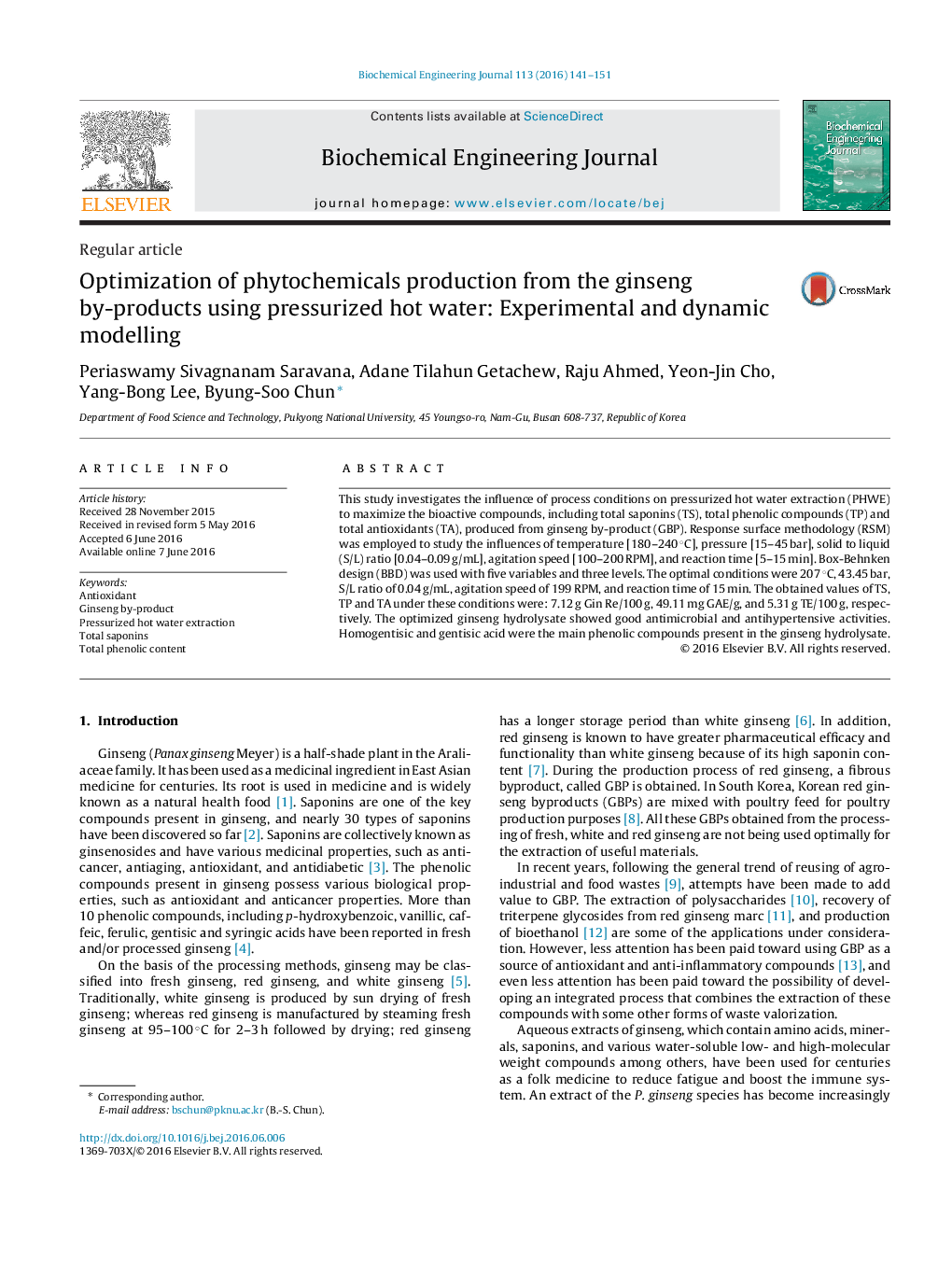| Article ID | Journal | Published Year | Pages | File Type |
|---|---|---|---|---|
| 2750 | Biochemical Engineering Journal | 2016 | 11 Pages |
•BBD was employed to extract bioactive compounds from GBP using PHWE.•The best extraction parameters were 207 °C, 43.45 bar, 0.04 g/mL, 199 RPM and 15 min.•The experimental extraction curves were fitted with the steady-state kinetic model.•Homogentisic acid and gentisic acid were the main phenolic compounds obtained.•The optimized condition showed good antimicrobial and antihypertensive activities.
This study investigates the influence of process conditions on pressurized hot water extraction (PHWE) to maximize the bioactive compounds, including total saponins (TS), total phenolic compounds (TP) and total antioxidants (TA), produced from ginseng by-product (GBP). Response surface methodology (RSM) was employed to study the influences of temperature [180–240 °C], pressure [15–45 bar], solid to liquid (S/L) ratio [0.04–0.09 g/mL], agitation speed [100–200 RPM], and reaction time [5–15 min]. Box-Behnken design (BBD) was used with five variables and three levels. The optimal conditions were 207 °C, 43.45 bar, S/L ratio of 0.04 g/mL, agitation speed of 199 RPM, and reaction time of 15 min. The obtained values of TS, TP and TA under these conditions were: 7.12 g Gin Re/100 g, 49.11 mg GAE/g, and 5.31 g TE/100 g, respectively. The optimized ginseng hydrolysate showed good antimicrobial and antihypertensive activities. Homogentisic and gentisic acid were the main phenolic compounds present in the ginseng hydrolysate.
Graphical abstractFigure optionsDownload full-size imageDownload as PowerPoint slide
